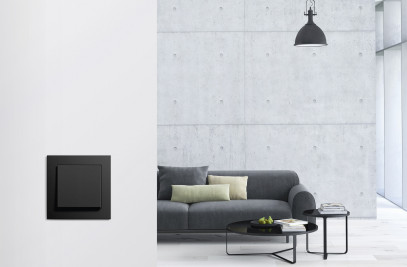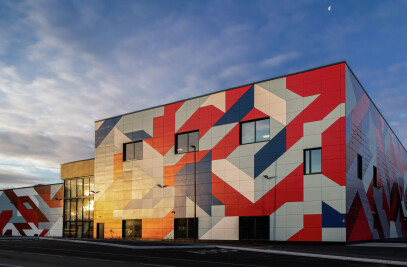French architectural studio Carmen Maurice Architecture (CMA) has completed the renovation of a mill and construction of winemaking and cellar facilities for a vineyard in Sarzeau, France. The newly constructed premises and surrounding vineyards blend harmoniously together.
Sarzeau is a historic wine production area located on the Rhuys Peninsula in the Morbihan department of Brittany, north-western France. Following a winemaking hiatus of 70 years, the municipality and the Parc Naturel Régional du Golfe du Morbihan (Gulf of Morbihan Regional Nature Park) made a decision to diversify the area’s agricultural production with the planting of vines. Vignerons Guillaume Hagnier and Marie Devigne won Sarzeau's public tender to make organic wine; in 2020, they arrived at the village of Poulhors in Sarzeau, the site chosen by Sarzeau town hall for the vineyard. The winemakers planted 25,000 vines, growing Chardonnay, Chenin, and Cabernet Franc grape varieties at the Vignoble de Rhuys (vineyard).
The former site
The site today
The site’s historic mill - now surrounded by six hectares (15 acres) of vines — provided CMA with a base from which to develop a plan for the contemporary wine cellar, one that tells the story of the place. Carmen Maurice’s thinking is informed by research, reading, and travels, and she designs sensitive architecture that resonates with the landscape. In this project, the architect draws on “a universal wine-making imagination to create an architectural language that enhances the spirit of the location.” A low, compact building wraps around the renovated mill and is designed to make best use of the winemaking process, from harvesting in the north to delivery in the south: “This design allows the press to work by gravity, while ensuring good thermal inertia,” says CMA.
(1. Hangar; 2. Covered area for grape harvests; 3. Technical room; 4. Mezzanine with press and red vats on R-1; 5. Fermenting room; 6. Cellar; 7. Labelling; 8. Covered gallery, exhibition area; 9. Tasting area; 10. Mill exhibition area; 11. Public toilets; 12. Men's changing rooms; 13. Women's changing rooms; 14. Personal toilets; 15. Cleaning area.)
Crafted by a heritage artisan, the lime plaster covering the brickwork creates a pleasing, almost “mystical” effect that is immanent, one that pervades as visitors approach the main entrance. “This material, with its unexpected plasticity, has allowed for the creation of living walls that express their ‘terroir’ and whose appearance changes with the weather and light, much like wine,” says CMA. The surface is made of a unique plaster mix that contains local sand. On the interior, CMA chose to highlight the building’s industrial character, leaving both the concrete and brick exposed.
The old mill has been transformed into an exhibition space on the ground floor, with staff and office spaces on its first and second floors.
The wine cellar offers a quiet haven and place for maturation — it is also an area reserved for wine tasting, inviting groups of people to explore and discover the history of the vineyards in Sarzeau. The design therefore embodies these two aspects, combining private and public spaces. “To the east, a built enclosure blends modestly into the landscape, housing the work of the winemakers,” says CMA. “To the west, the walls of the cellar open generously to the surroundings, offering an unobstructed view of the two neighboring mills.”
(5. Winery; 9. Tasting area; 10. Mill exhibition space; 17. Mill R+1 team space; 18. Mill R+2 offices.)
Longitudinal section
(2. Covered area for grape harvests; 3. Technical room; 4. Mezzanine access with press and red vats in R-1; 8. Covered gallery, exhibition area; 9. Tasting area; 10. Mill exhibition space; 17. Mill R+1 team space; 18. Mill R+2 offices.)
The first harvest at the Vignoble de Rhuys took place in 2022: named “Dantelezh”, it produced almost 6,500 bottles. Dantelezh is Breton for “lace” and symbolizes handmade. The mill renovation and newly constructed premises were completed in 2024.
Floor area: 496.27 square meters (5,342 square feet) + 200 square meters (2,153 square feet) for the winemaking and cellar.

































































